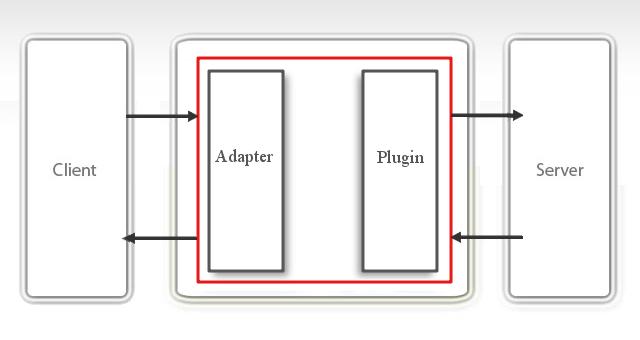Difference between revisions of "Paradigms of communication"
(→Synchronous-Synchronous) |
|||
| Line 14: | Line 14: | ||
===Synchronous-Synchronous=== | ===Synchronous-Synchronous=== | ||
| + | [[File:ParadigmSS.jpg]]The Synchronous-Synchronous paradigm takes place following the Client -> {{GVESB}} -> Server direction. | ||
| + | |||
| + | The following table shows its properties: | ||
| + | {|class="gvtable" | ||
| + | ! !! Client !! {{GVESB}} Workflow Number !! Server | ||
| + | |- | ||
| + | | Communication || Synchronous || 1 || Synchronous | ||
| + | |} | ||
===Synchronous-Asynchronous=== | ===Synchronous-Asynchronous=== | ||
Revision as of 17:22, 10 February 2012
Contents
Description
Depending on the type of communication (Synchronous / Asynchronous), on the role played by GreenVulcano® ESB (active / passive) and on the response management, it is possible to have from a minimum of one to a maximum of four operations constituting a single interaction client - server.
GreenVulcano® ESB Configuration
GreenVulcano® ESB is configured for managing four paradigms of communication:
- Synchronous - Synchronous
- Synchronous - Asynchronous
- Asynchronous - Synchronous
- Asynchronous - Asynchronous
Synchronous-Synchronous
 The Synchronous-Synchronous paradigm takes place following the Client -> GreenVulcano® ESB -> Server direction.
The Synchronous-Synchronous paradigm takes place following the Client -> GreenVulcano® ESB -> Server direction.
The following table shows its properties:
| Client | GreenVulcano® ESB Workflow Number | Server | |
|---|---|---|---|
| Communication | Synchronous | 1 | Synchronous |